RS500 Front Mounts?
#1
Hi,
I've been reading on here a lot recently about RS500 intercoolers. Are these genuine items taken from an RS500 or aftermarket parts fitted to some?
Like this? - http://www.ebay.co.uk/itm/COSWORTH-R...item19d3392296
What would be the benefits of having one over say a hybrid front mount?
Where would you then be able to get pipework to fit?
Thanks
I've been reading on here a lot recently about RS500 intercoolers. Are these genuine items taken from an RS500 or aftermarket parts fitted to some?
Like this? - http://www.ebay.co.uk/itm/COSWORTH-R...item19d3392296
What would be the benefits of having one over say a hybrid front mount?
Where would you then be able to get pipework to fit?
Thanks
#5
The only real advantage over a good 'normal' position FMIC is that it shortens the pipe work right down as both inlet/outlet pipes are positioned at the top at slam panel height.
It also looks the bollocks as well mind
It also looks the bollocks as well mind

#7
Surely the cooling effect of the inter cooler would be diminished by only having the flow at the top?
Trending Topics
#8
The intercooler is massive,it is as effective as any good FMIC but the inlet/outlets of the cooler are positioned at the top/up high so when put into position you can have a short run from turbo-IC and IC-throttle body.
It would over half the length of normal IC pipe work thus reducing lag[marginal though]
#9
Too big or bigger than required to do the job is a bad thing.
The first two questions are what is the construction method? Tube and fin, preferable or bar and plate, not as good for our applications.
Next, measure the pressure drop, not the vendors claims but actual pressure drop in your installation. This can be done with a magnahelix guage or two boost guages with suitable welded or tapped nipples.
In operation, an ACT guage will indicate how well or otherwise the setup is functioning.
The first two questions are what is the construction method? Tube and fin, preferable or bar and plate, not as good for our applications.
Next, measure the pressure drop, not the vendors claims but actual pressure drop in your installation. This can be done with a magnahelix guage or two boost guages with suitable welded or tapped nipples.
In operation, an ACT guage will indicate how well or otherwise the setup is functioning.
#10
Too big or bigger than required to do the job is a bad thing.
The first two questions are what is the construction method? Tube and fin, preferable or bar and plate, not as good for our applications.
Next, measure the pressure drop, not the vendors claims but actual pressure drop in your installation. This can be done with a magnahelix guage or two boost guages with suitable welded or tapped nipples.
In operation, an ACT guage will indicate how well or otherwise the setup is functioning.
The first two questions are what is the construction method? Tube and fin, preferable or bar and plate, not as good for our applications.
Next, measure the pressure drop, not the vendors claims but actual pressure drop in your installation. This can be done with a magnahelix guage or two boost guages with suitable welded or tapped nipples.
In operation, an ACT guage will indicate how well or otherwise the setup is functioning.
I'm eventually looking at 2.1, SC42 or 46.
#11
The first two questions are what is the construction method? Tube and fin, preferable or bar and plate, not as good for our applications.
Next, measure the pressure drop, not the vendors claims but actual pressure drop in your installation. This can be done with a magnahelix guage or two boost guages with suitable welded or tapped nipples.
In operation, an ACT guage will indicate how well or otherwise the setup is functioning
Next, measure the pressure drop, not the vendors claims but actual pressure drop in your installation. This can be done with a magnahelix guage or two boost guages with suitable welded or tapped nipples.
In operation, an ACT guage will indicate how well or otherwise the setup is functioning
Now a lot of people put effort in to reducing the pipe run length. It makes a small difference in the overall scheme of things and running far too big a core beyond a certain point just adds to volume and has little or no effect on ACTs if the core is efficient and already sufficiently large to handle the thermal load.
Last edited by harvey; 23 July 2012 at 11:09 PM.
#12
About the ACT,on our one we are seen maximum 38C on the drag strip(Santa pod) after 10-15 drag runs,around 28C when we are normal driving motorway and B-roads,33C on track days
Jura
Jura
#13
The FMIC performance is measured in Deg C over ambient.
Obviously the outside air temp varies so you compare performance by the temp difference over the ambient or OAT and the ATC is usually measured just before the throttlebody.
Obviously the outside air temp varies so you compare performance by the temp difference over the ambient or OAT and the ATC is usually measured just before the throttlebody.
#14
On drag strip outside temps has been around 20-25C,mixed motorway and B-road driving temps has been 25-28C,track days around 20-25C
Jura
#15
Let me see if I've got this straight...
Tube and Fin is preferable to bar and plate, is there a visible way of knowing which is which?
I'd then fit an ACT gauge before the throttle body to know how much boost can safely be used? Do we then get into the realms of how accurate an ACT is used or is a cheap and nasty one like this ok?
http://www.ebay.co.uk/itm/Air-Charge...item231fb18a3b
Could having a larger core have a negative effect on performance on a moderate build, or would it just be a case of overkill?
Tube and Fin is preferable to bar and plate, is there a visible way of knowing which is which?
I'd then fit an ACT gauge before the throttle body to know how much boost can safely be used? Do we then get into the realms of how accurate an ACT is used or is a cheap and nasty one like this ok?
http://www.ebay.co.uk/itm/Air-Charge...item231fb18a3b
Could having a larger core have a negative effect on performance on a moderate build, or would it just be a case of overkill?
#16
The intercooler is massive,it is as effective as any good FMIC but the inlet/outlets of the cooler are positioned at the top/up high so when put into position you can have a short run from turbo-IC and IC-throttle body.
It would over half the length of normal IC pipe work thus reducing lag[marginal though]
It would over half the length of normal IC pipe work thus reducing lag[marginal though]
#17
#18
That aside, evryone running the rs500 cooler is runing 600+ bhp, (big arf/hard p1 etc.) so they cant be that bad? Specially since the guys who stuck them on had hybrid intercoolers before, so they must be an improvement?
#19
That's my point really. I'm aiming for 400/400 in the end, so not exactly needed but if I invest in one now I wouldn't need to change later if I went further. I just need to know if it would have a detrimental effect at all. Oh and where to get pipe work made up lol.
#20
Thats a bit of an assumption as I would put money on no one having flow tested them. The main reason would have been for the pipework run.
#21
Banny said the hybrid was not functioning after 500 or so horsepower, think jef had the same problem.
#26
Let me see if I've got this straight...
Tube and Fin is preferable to bar and plate, is there a visible way of knowing which is which?
I'd then fit an ACT gauge before the throttle body to know how much boost can safely be used? Do we then get into the realms of how accurate an ACT is used or is a cheap and nasty one like this ok?
http://www.ebay.co.uk/itm/Air-Charge...item231fb18a3b
Could having a larger core have a negative effect on performance on a moderate build, or would it just be a case of overkill?
Tube and Fin is preferable to bar and plate, is there a visible way of knowing which is which?
I'd then fit an ACT gauge before the throttle body to know how much boost can safely be used? Do we then get into the realms of how accurate an ACT is used or is a cheap and nasty one like this ok?
http://www.ebay.co.uk/itm/Air-Charge...item231fb18a3b
Could having a larger core have a negative effect on performance on a moderate build, or would it just be a case of overkill?
To try to explain further, on a constant speed diesel generator engine for instance a bar and plate with a good air flow to it would be preferable to a tube and fin. However, a tube and fin by nature of its construction will almost always have a far smaller pressure drop so the turbo has to work that much less to achieve the desired manifold boost pressure.
Bar and plate is exactly what it says as is a tube and fin. Layers of tube separated by thin aluminium wafers to dissipate the heat. Obviously the tube and fin is of lighter construction as it is not solid bar.
Now 400 bhp is not a big power figure and it will not take much of an intercooler (if it is efficient) to control charge air temperatures from the compressor on that particular engine providing the turbo is operating within its efficiency range. Manufacturers only want to manufacture a limited number of core sizes so it is quite normal for cars to be fitted with cores that are bigger than required, particularly at the bottom spectrum of the power range where an FMIC really starts to show benefits eg. 400 bhp.
All the current Hybrid cores are rated at 600 bhp or more with some of the GT2 being rated 700 plus bhp.
As explained above, too big a core could have a negative effect.
Until you have firm information on ACTs and ambient temperatures recorded at a particular time you cannot determine how well an intercooler is working or otherwise.
There are other factors to consider too.
Has the core been painted?
Is the pipework efficient, ie. correct diameters and smooth bends?
Is the cold side of the pipework lagged to keep out latent or radiated heat?
Is the hot side routed away from any heat source in excess of the compressor discharge air temperature which is generally 100-200 deg. C. but more likely around 160 deg. C?
Is the air routing to the core and around the engine efficient?
I cannot comment on the RS500 copy cores referred to as I have not tested or even seen one of these in the flesh but I can tell you that you will be very hard pressed to find a core that will out perform any of the Hybrid GT2 cores in like for like situations and I have specifically conducted tests on Perrin, APS, Hyperflow and others. Some of the cheap intercooler kits are total rubbish, presumably produced for visual effect only.
As already referred to above a big consideration is whether the turbo is operating within its effiiciency envelope and it is possible to observe quite stark differences in intercooler performance when a turbo is changed without any other change to the intercooler or engine.
As an example while rolling road mapping last Friday we struggled to get air charge temperatures more than 10 degrees C. above ambient ie. 34 degrees and 24 degrees. Previously same car but with a different turbo producing less power temperatures were as much as 16 degrees over ambient.
Last edited by harvey; 23 July 2012 at 11:42 PM.
#27
i had the aps dr725 on mine before i fitted the rs500 cooler.i didnt take the aps off because it wasnt doing the job as it was a very good intercooler indeed.the reasons for me changing it were that i had spun my inlet manifold in the winter months when i had time to kill.i had seen the rs500 coolers fitted and thought what the hell i'll do it.i had one made by pro-alloy and fitted it myself which takes a bit of fabricating,then you need to do the same with the rad.all in all i dont think there is any major noticable difference from losing all the pipework but there was a couple of kilo in weight loss atleast,and it also cleared a lot of space in the engine bay.i think the end result is that its a hell of a lot of messing about but if you dont by a cheap ebay jobbie it will do the job.
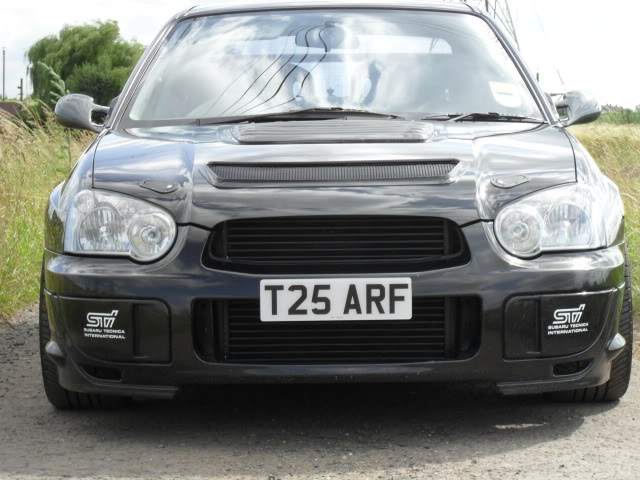
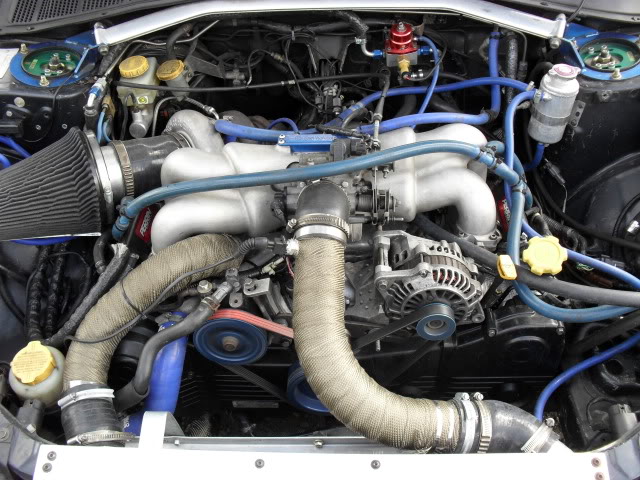
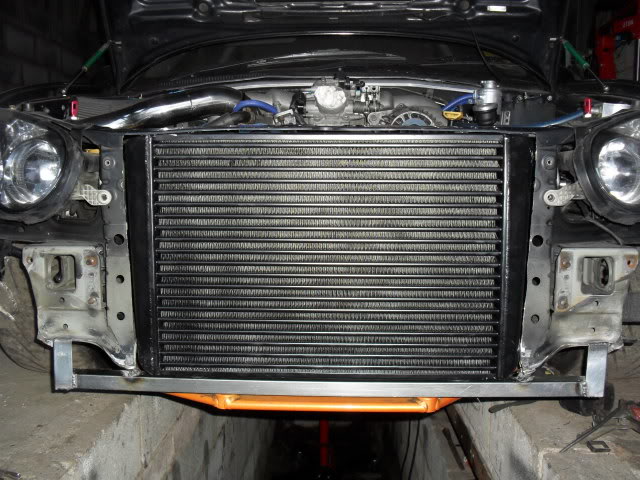
#28
That isn't Arf nice. 
A fair bit of work there and very tidy.
As regards inverting the core so entry and exit are at the top, on our cores, as with most other kit cores, it involves a fair bit of work and I am undecided as to the wisdom of doing this anyway.
The reduction in pipework length or volume makes no difference that I can measure but it must make a small difference. Inreasing the core size at the same time will negate any benefit you have just created unless the existing core was too small or less efficient than the replacement.
As we all know, heat rises so I suspect hot air in at the bottom and coolled air out on the other side at the bottom is more efficient but I do not know for sure. I have only had two installations to play with to try to find an answer and this also included using an infra red thermometer to look at heat distribution across the core surface. I know that Hybrid spent a lot of time redesigning the intercoolers to improve heat distribution over as wide an area as possible and this is why the end tank design is substantially different as well as other suttle differences to improve flow.
I don't know all the answers but I know a man who will know more so I will ask some questions and get back with his answers.

A fair bit of work there and very tidy.
As regards inverting the core so entry and exit are at the top, on our cores, as with most other kit cores, it involves a fair bit of work and I am undecided as to the wisdom of doing this anyway.
The reduction in pipework length or volume makes no difference that I can measure but it must make a small difference. Inreasing the core size at the same time will negate any benefit you have just created unless the existing core was too small or less efficient than the replacement.
As we all know, heat rises so I suspect hot air in at the bottom and coolled air out on the other side at the bottom is more efficient but I do not know for sure. I have only had two installations to play with to try to find an answer and this also included using an infra red thermometer to look at heat distribution across the core surface. I know that Hybrid spent a lot of time redesigning the intercoolers to improve heat distribution over as wide an area as possible and this is why the end tank design is substantially different as well as other suttle differences to improve flow.
I don't know all the answers but I know a man who will know more so I will ask some questions and get back with his answers.
#30
I was running a newage hybrid core with 2.5" pipe work and it was maxed at mid 500s, ACT's as eggy stated were rising with the revs. Decided on a hyperflow purely for less work and also changed the pipework for 3" on the inlet.
Even after repeated runs on the dastek dyno (which run hotter than a Dyno Dyanmics) with more boost the max I have seen is 40 degrees ACT.
Old cooler

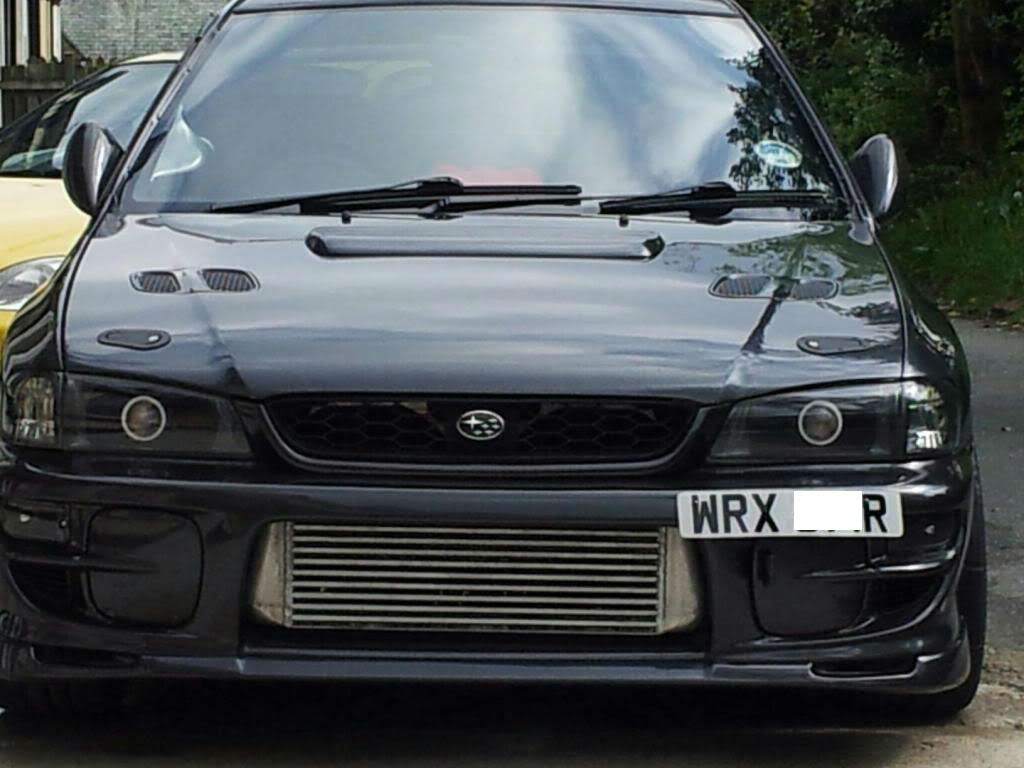
Old pipework
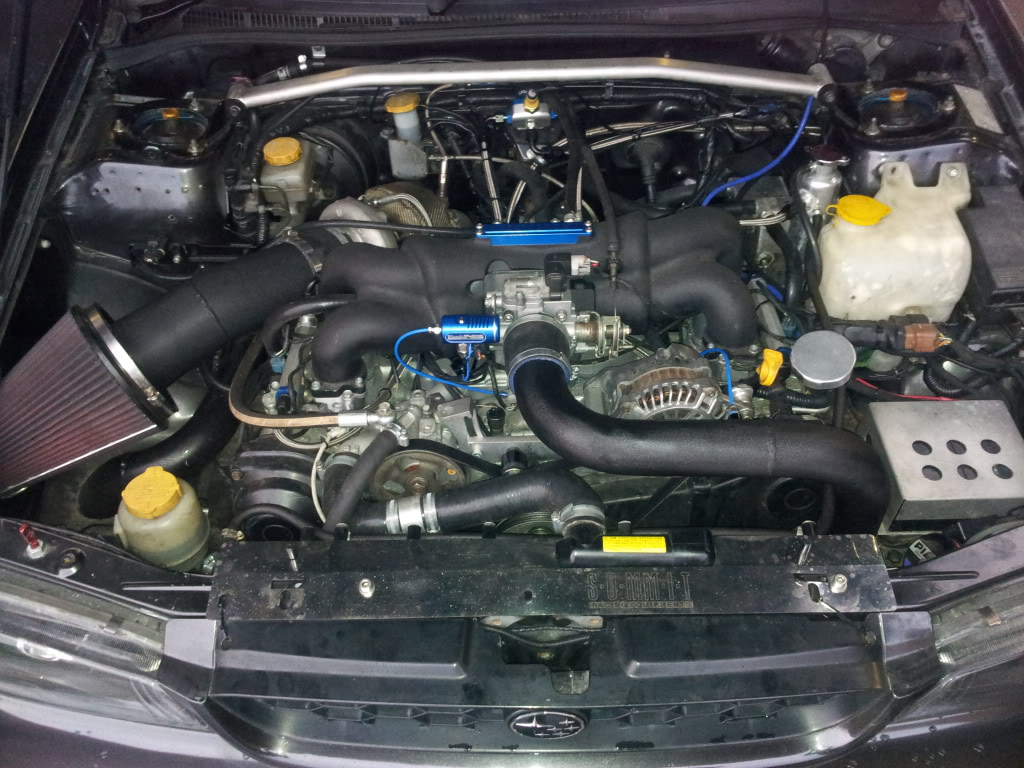
New cooler

New pipework

Even after repeated runs on the dastek dyno (which run hotter than a Dyno Dyanmics) with more boost the max I have seen is 40 degrees ACT.
Old cooler

Old pipework
New cooler

New pipework

Last edited by banny sti; 24 July 2012 at 12:05 PM.




